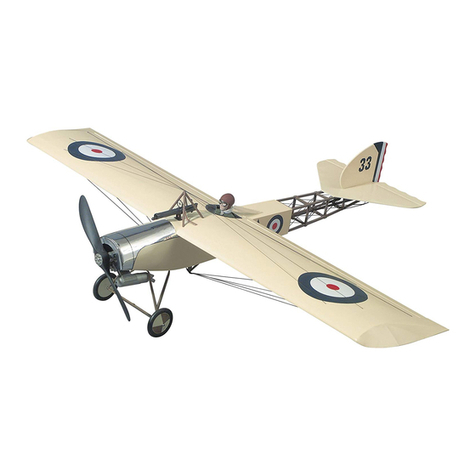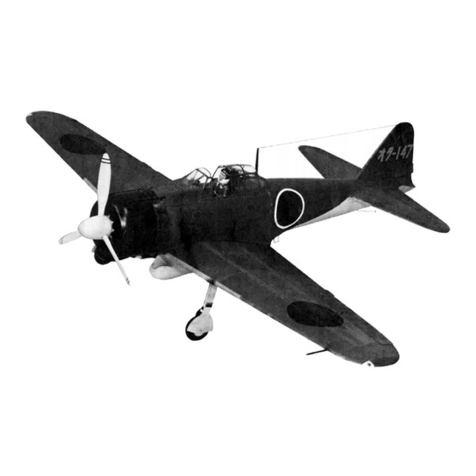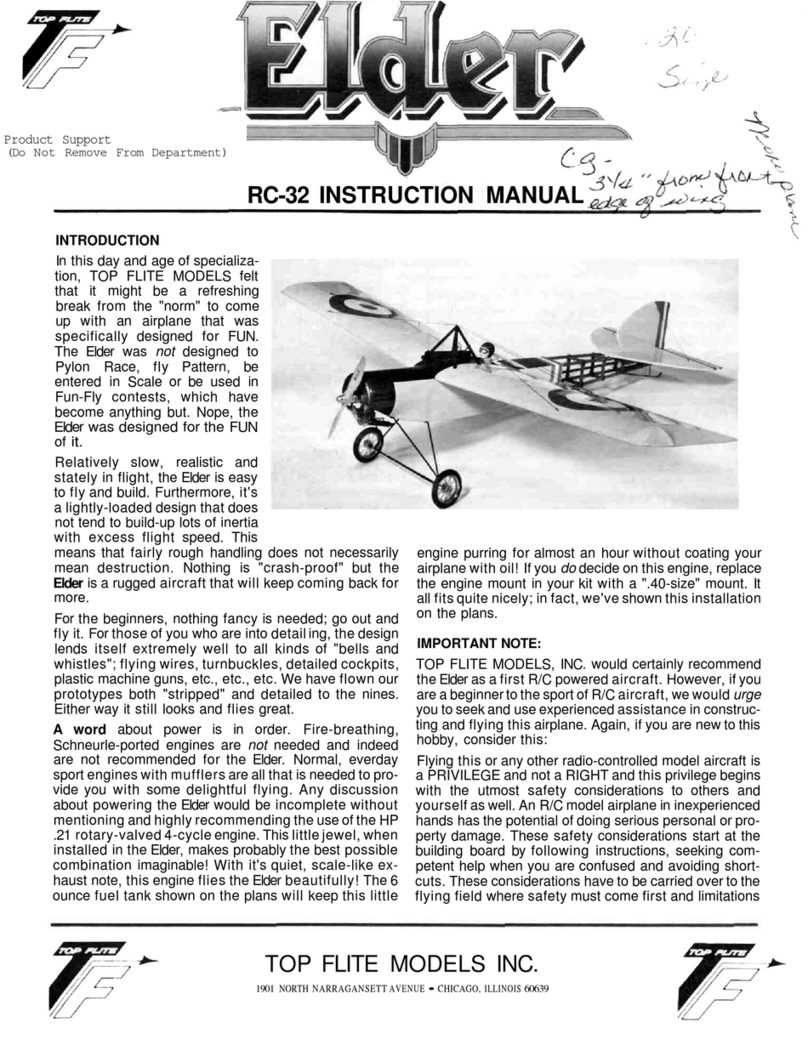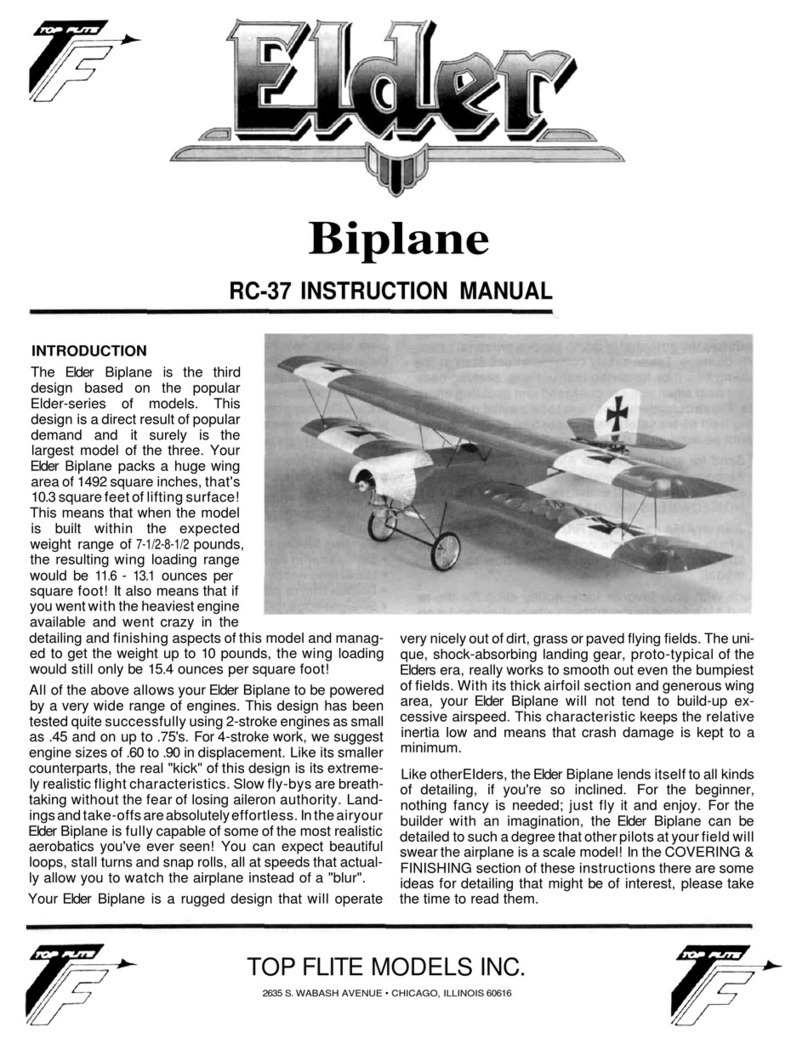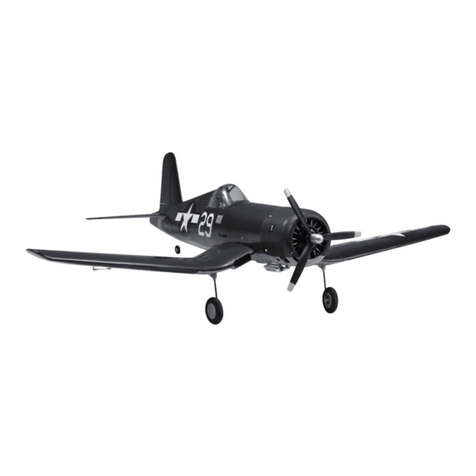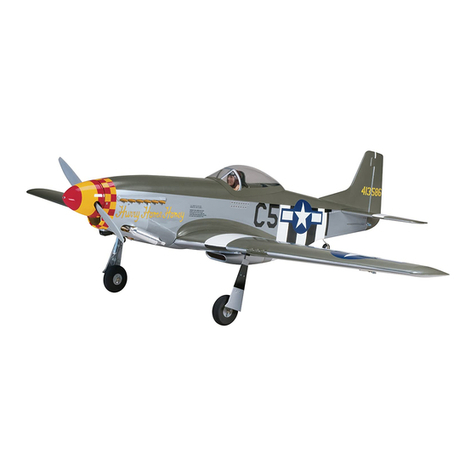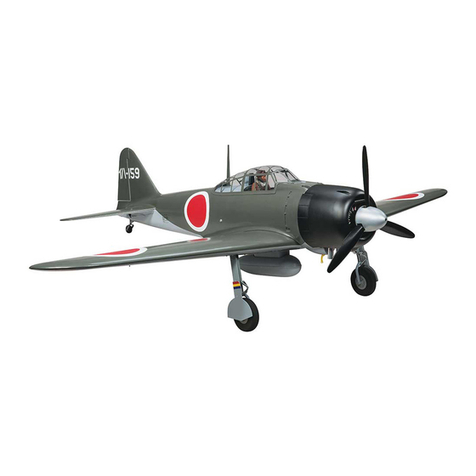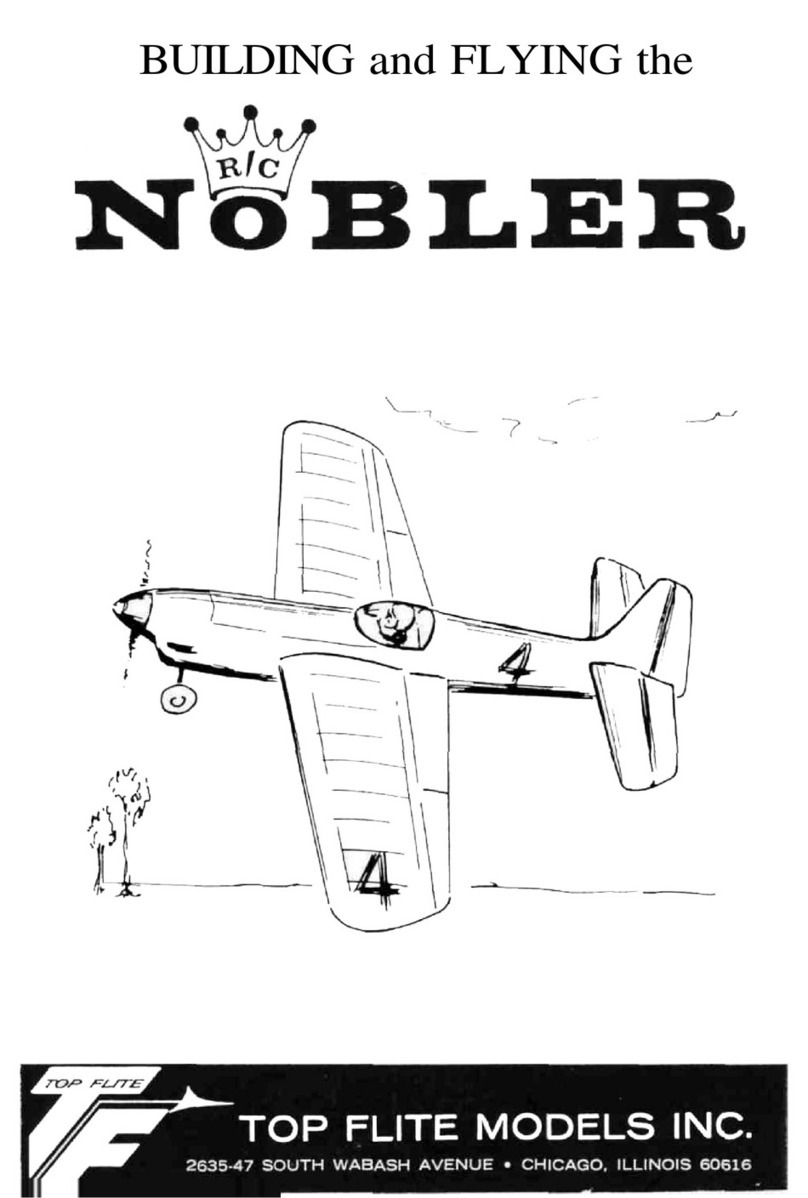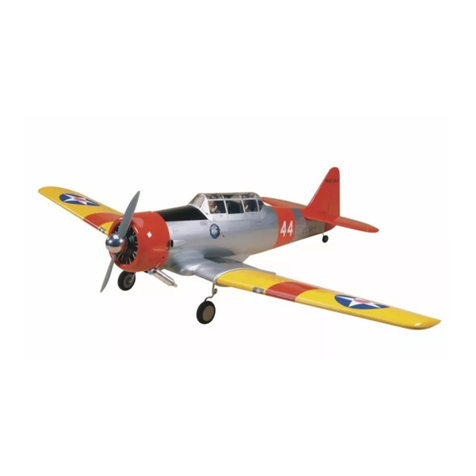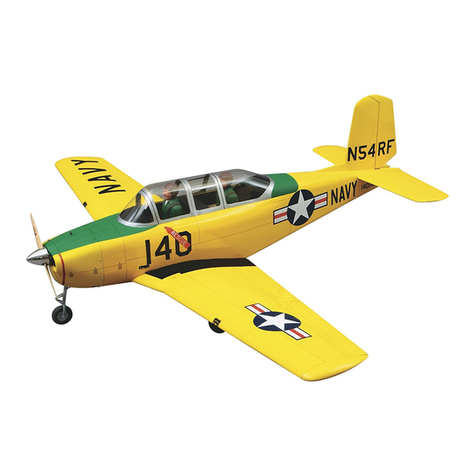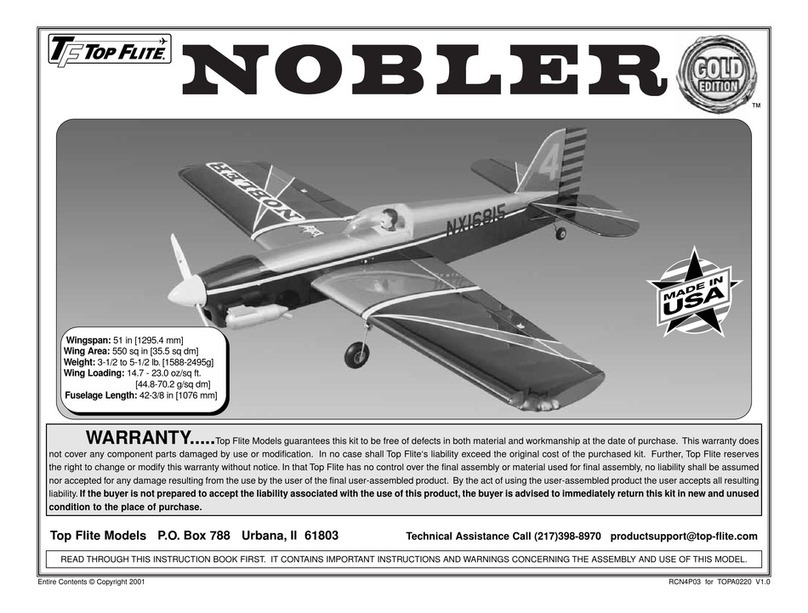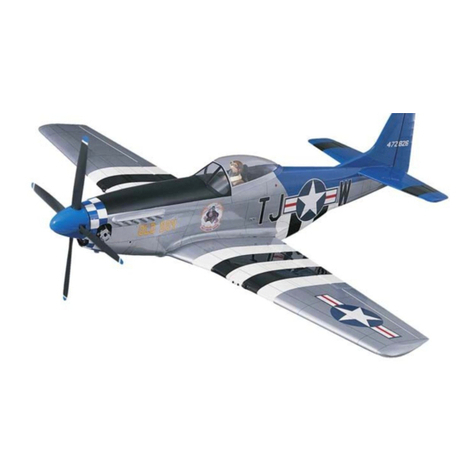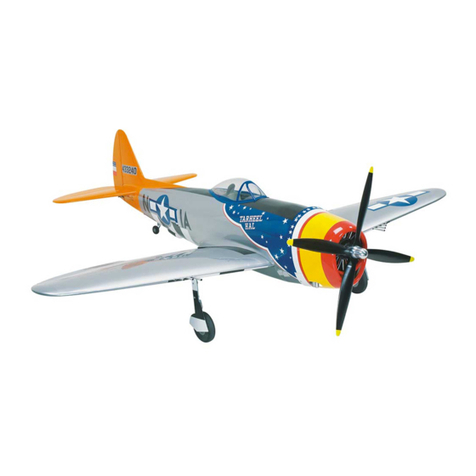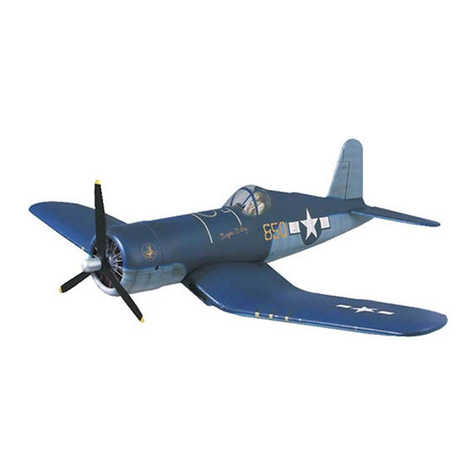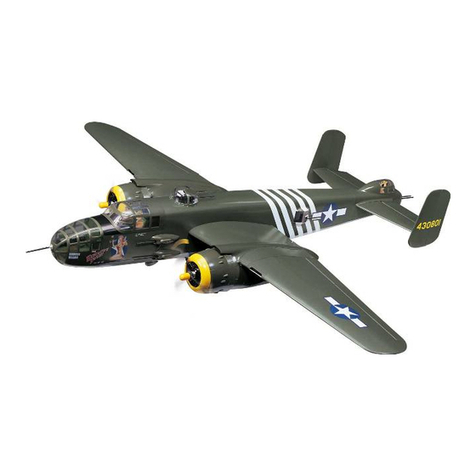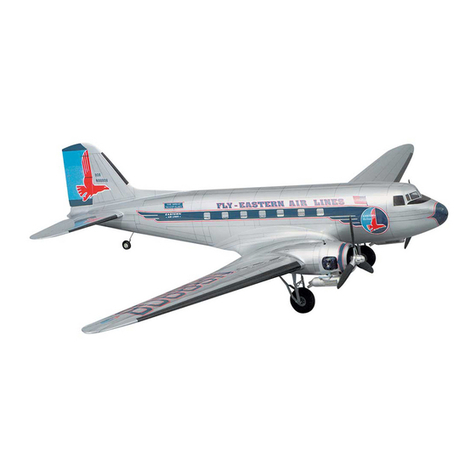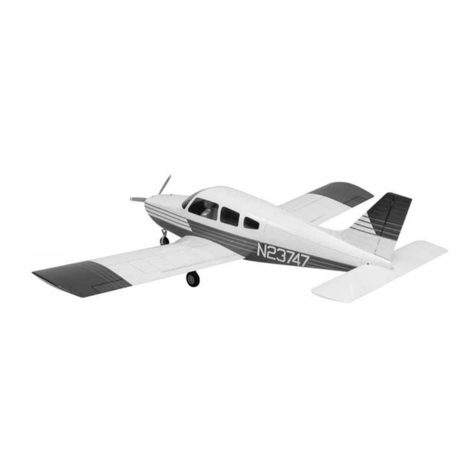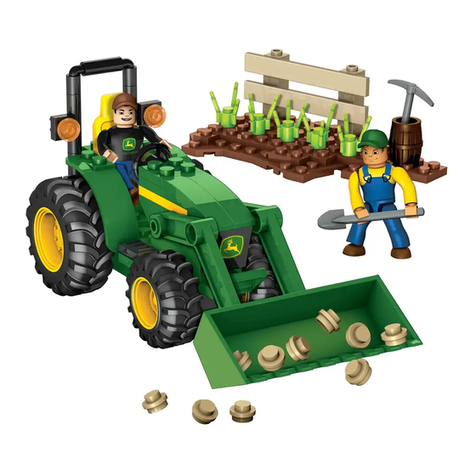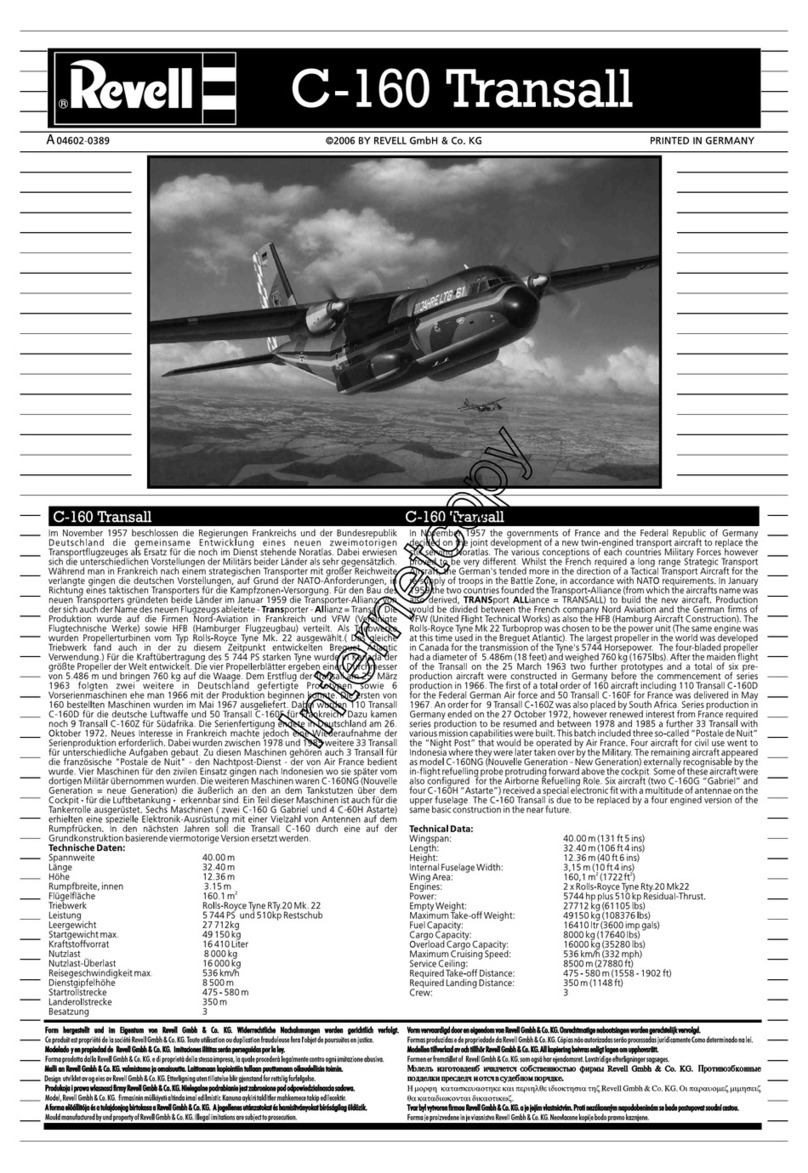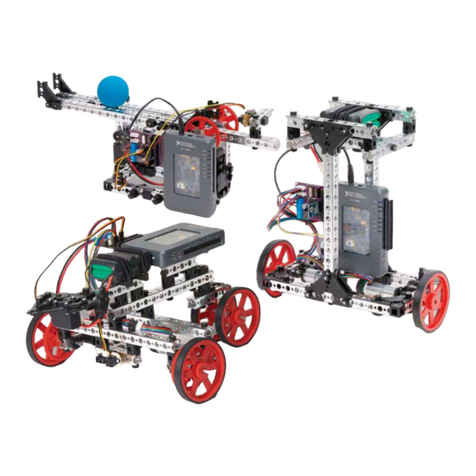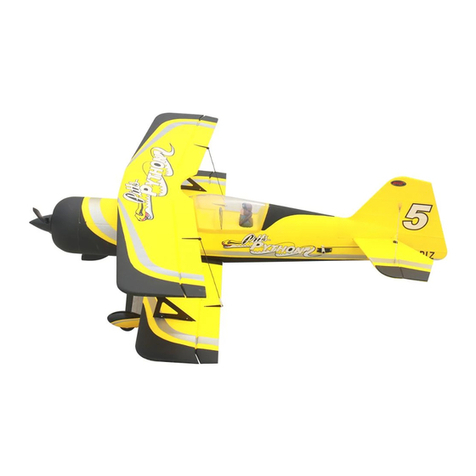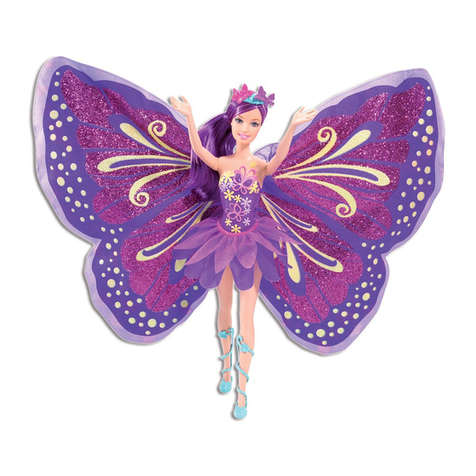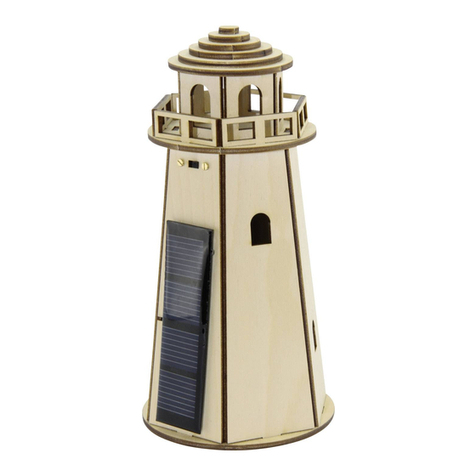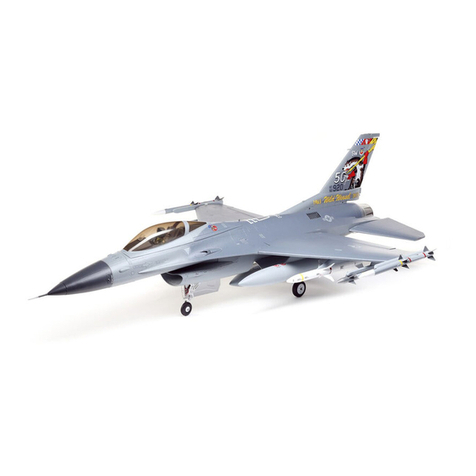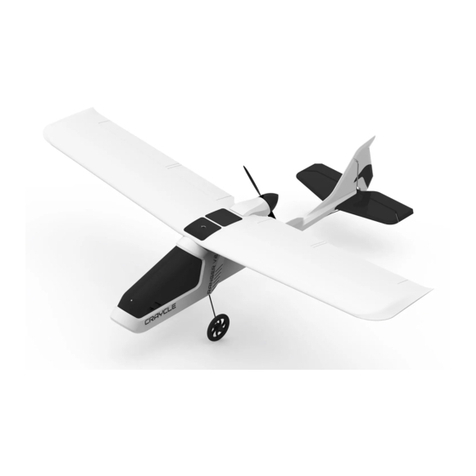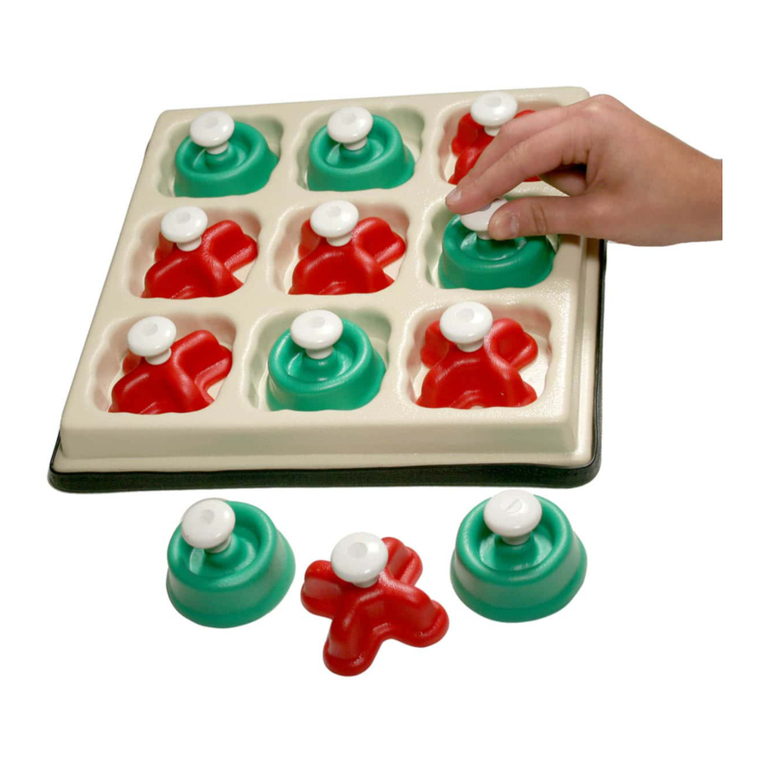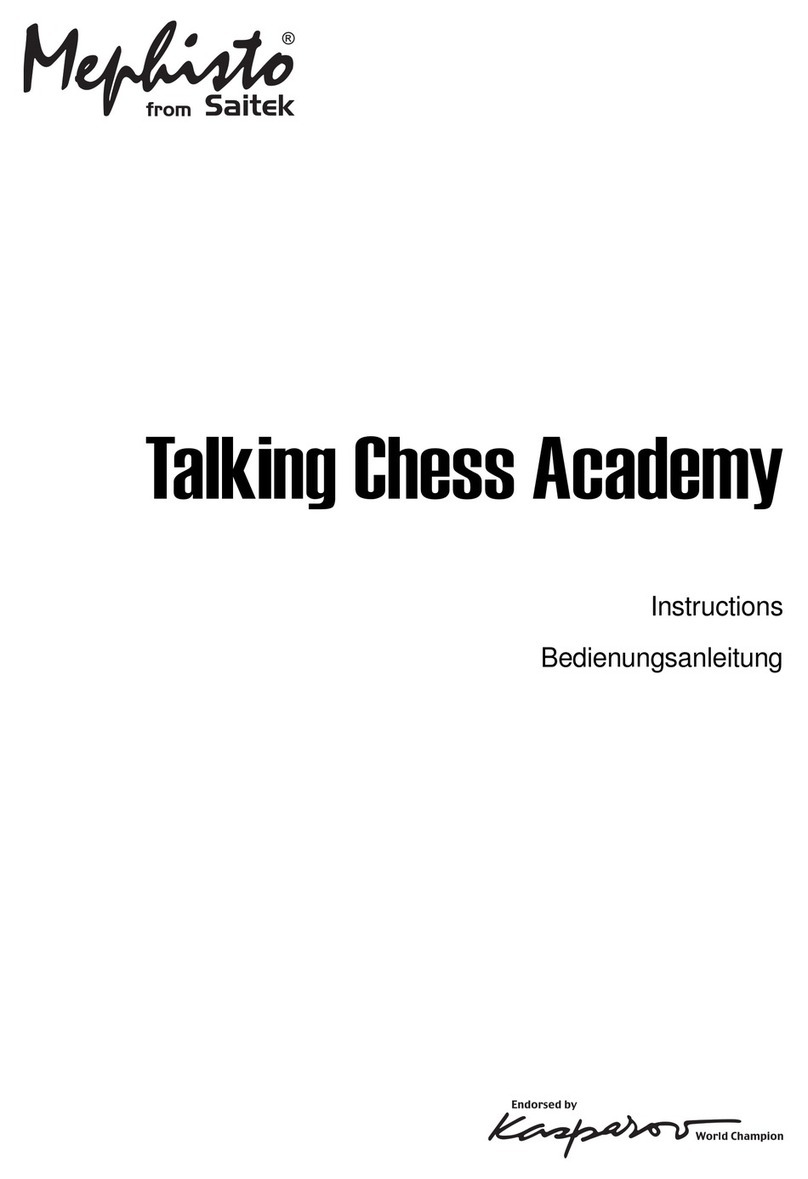6
COMMON ABBREVIATIONS USED
INTHIS BOOK AND ON THE PLANS:
Deg. = Degrees Lt= Left
Elev = Elevator Ply= Plywood
Fuse= Fuselage Fit= Right
LE= Leading Edge(front)Stab = Stabilizer
LG
=Landing Gear TE = Trailing
Edge(rear)
=Boxto checkafterstep" = Inches
iscompleted.
BalsaBasswood Plywood
GETREADY TO BUILD
1.Unroll the plan sheets. Re-roll the plans inside
outto make them lieflat. The wing plan sheet hasa
cut-line across it. Ifyou have a small building space
you may cut the wing plan into two pieces along this
line.
Thefuselageplan sheetdoes nothaveacut-line
across it. Itisused mostly forreference and not
much building isdone over it.There isnotmuch
benefit incutting itapart, butyou may doso ifyou
wish.
2. Remove all parts fromthe box. Asyou do,
figure outthe name of each part by comparing itwith
the plans, die-cut patterns, and the parts list at the
back ofthis book. Using a felttip pen, writethe part
name orsize on each piece to avoid confusion later.
Usethe die-cut patterns shown on page 4 to identify
thedie-cutparts and markthembefore punchingout.
Saveallscraps. Ifanyofthe die-cut parts aredifficult
to punch out, do not forcethem! Instead, firstcut
aroundthepartswithanX-actoknife. Afterpunching
outthe die-cutparts, useyourT-Barorsanding block
to lightly sand the edges to remove anydie-cutting
irregularities.
USINGGLUE
There aretwo types ofgluethat are recom-
mendedforbuilding this model: CA and Epoxy.
CA (cyanoacrylate) glue isused for gen-
eral construction. Itisavailable ina variety of
viscosities. We recommend you have the fol-
lowing two types.
ThinCA has a viscosity similar to water
and isused to glue together parts that fit
together very well and donotrequire reposi-
tioning after glue isapplied. Thin CA isespe-
cially effectiveforgluing balsa to balsa. Itcan
beused to glue hardwoods such as plywood,
spruce, or bass but itisusually necessary to
filletthejointafterwards with some medium CA.
Thin CA hasthe abilityto "wick" intojoints. This
means itwill bedrawn into very finegaps
between parts. This characteristic makes thin
CA very useful fora lot oftasks, such as gluing
seams that are already clamped together or
installing CA hinges. Thin CA usually setsvery
rapidly, so do not expect to move parts at all
after glue is applied. This rapid reaction may
also produce fumes and a significantamountof
heat. Always useCA glues ina well-ventilated
area.
The other typeof CA glue we recommend
ismedium(or gap filling).Medium CA isused
in
general construction forparts which have
gaps,requireslight repositioning,or involve
hardwoods. Medium CA can beused to make
small filletsbetween parts inhigh stress areas.
Medium CA isa very good general purpose
glue and many people useitforthe majority of
theirbuilding.
Some medium CAgluescan beslowtoset,
especially when used to fillgaps. A product
known as CA accelerator isavailable to speed
things up.Itissprayed onto the joint after the
glue isapplied and chemically reacts with the
glue causing itto set very rapidly. There are a
fewprecautions to consider when using an
accelerator...
Useitina well ventilated area. Therapid
reaction can release irritating fumes ata higher
ratethan normal.DonotuseCAacceleratoron
thin CA!
Becareful when usingthe accelerator
around plastics. Certain accelerators may
attack some plastics and the vapors may fog
clearcanopies. Itisbest to test the glue and
accelerator on a scrap piece of plastic ifoneis
available.
Using too much acceleratormay cause the
CA glue to react very rapidly andliterally boil.
Thiswill result inajointwith achalkywhite color
which isnotnearly as strong as a normaljoint.
Epoxy isused onhigh-stress joints that
require toughness andvibration resistance.
Epoxy also works wellinareas that may en-
counter fuel.Its slower cure time allows parts
to beclamped, checked, and realigned ifnec-
essary before the epoxy sets. Epoxy isavail-
ableinmany different formulas having different
cure times. The single best type of epoxy to
have available when building yourSierra isone
thatsets in15minutes, but you may also find 5-
minute epoxy handy to have around.
them into groups, such as fuse (fuselage), wing, fin
and stab (stabilizer), andhardware.
3.As you identify and mark the parts, separate




















